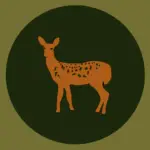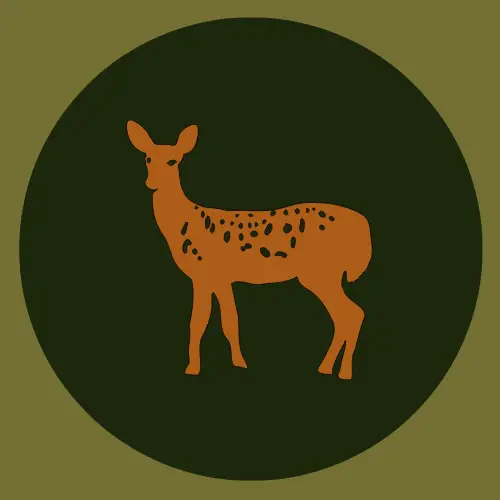Muntjac Deer: Discover the Secret Lives of Wild Deer

What is a Muntjac Deer?
The muntjac deer is a small, charming, and mysterious alien-like wild animal. They are native to Southeast Asian countries such as India, Bangladesh, Pakistan, and a few other countries in Central Asia. Muntjac Deer are also called barking deer, Monk Jack Deer, Monkjack Deer, Muntjack Deer, Munjac Deer, and Mountjack Deer in different places. They belong to the genus Muntiacus, which comprises fifteen different species. What distinguishes them from other species is their small height, short antlers, vocalization, stocky bodies, and scent glands on the face. Male muntjac deer have long canine teeth, which they use for fighting. They are good at camouflaging themselves and live in the forest. These deer are herbivores and prefer to consume different types of fruits, leaves, and tree bark. They are the oldest known species of deer, and the fossils that remain date from 15 to 35 million years ago.
From the depths of Southeast Asian forests to the tranquil countryside, Muntjac deer continuously capture the fascination of wildlife enthusiasts across the world. Their secretive lifestyle and enchanting appearance make them captivating deer. It is important to learn, understand, and appreciate the unique characteristics, and natural habitat requirements of this wild animal to ensure its preservation for generations to come. In this article, we will explore the unique characteristics, habitat, behavior, and significance of muntjac deer in the natural wild ecosystem.
Profile
| Zoological Names | Pan Troglodytes and Pan sp. |
| Family | Hominiae family |
| Areas | Africa |
| Category | Omnivore |
| Length | Between 2 and 3 feet |
| Age | 15-50 years |
| Build | Non-verbal communication, empathy, and problem-solving |
| Ability | Non-verbal communication, empathy and problem-solving |
Characteristics and Appearance
Muntjac deer are also known as barking deer because they make barking noises similar to dogs. They also scream and squeak to communicate. They are miniature in size, and on average, they can be measured between 1.5 and 2 feet tall. They have an elegant dark brown or reddish-brown coat, which makes them blend and camouflage effortlessly into their woodland surroundings in the wild. Sometimes they have white patches on their bodies, too. Both male and female deer have small antlers, the bony outgrowths that are found on the heads, which they shed annually. Females have only bony knobs, whereas males have short, unbranched antlers that grow up to 15 centimeters and are mostly used for mating rituals and demonstrating dominance. Their defense mechanism is not their antlers but their long canine teeth.
Why do they have holes in their faces?
They have two visible sets of holes that are scent glands on their faces; one set is on the head, and one is on the head. These glands secrete a personalized concoction of chemical compounds. These glands are used during mating season to mark their territory, convey information about their age, and signal their status of reproduction to females.
How fast can muntjac deer run?
Muntjac deer are also known as fast runners. They are quite elegant and can reach impressive speeds when necessary. They can easily reach speeds of up to 45 miles per hour (i.e., 72 kilometers per hour) in short bursts when they need to escape from predators or navigate their environment.
How Tall are Muntjac Deer?
Muntjacs are short in height, and on average, they are about 20 to 30 inches tall. But their size varies depending on the different categories of this species. The Indian Muntjac Deer also called the Barking Deer, is around 15 to 20 inches tall at the shoulder, whereas the Reeves’ Muntjac, a large species, is around 24 inches at the shoulder. These measurements of height are not always 100% accurate and may vary depending on the overall health of the deer.
How Long do Muntjac Deer Live?
Muntjac Deer have an average lifespan of between 10 and 16 years in the wild. In captivity, some deer have lived up to the age of 20 years.
Where do Muntjac Deer Live?
Muntjac deer are native to Central and Southeast Asian countries. They are found mainly in India, Bangladesh, Pakistan, Sri Lanka, Myanmar, Thailand, Cambodia, and China. Different species of Muntjac Deer have been introduced to different parts of Europe and North America. In urban cities in Europe and America, these deer have been classified as invasive animals because of their quick overpopulation and damage to the environment. In the wild, these deer mostly live in deep forests and are highly skilled at camouflaging themselves in greenery.
Distribution and Habitat
Muntjac Deer are native to Southeast Asia and some parts of South Asia. Their different species, such as Indian Muntjac, Reeves’s Muntjac, Formosan Muntjac, Hairy-fronted Muntjac, Fea’s Muntjac, and Tufted Deer, can be found in countries such as China, India, Indonesia, Pakistan, Vietnam, and Thailand. They have successfully adapted to many other countries and various environments. These majestic deer are mostly found in dense forests, rural farmlands, and scrublands in the wild. They prefer habitats that have thick vegetation cover for camouflage and protection from potential threats.
Are Muntjac Deer Endangered?
If Muntjac Derr is endangered or not, depends on the specific species and region. Due to habitat loss and continuous hunting in some areas, the overall population is decreasing. In some areas, they are considered vulnerable or near threatened, but they have not been classified as globally endangered by conservationists yet. The status of these deer can change quickly if protective measures are not taken promptly.
Significance in Ecology
Although they are small, they play crucial roles in their respective ecosystems. They consume vegetation, disperse seeds, and aid in maintaining diversity within the wild. At high population densities in certain forests, their role may have negative impacts on plant regeneration and may require strategic management.
Life Cycle and Reproduction
They have a relatively short pregnancy period, which is about 7 months, and give birth to a single fawn at a time. They are delicate creatures born in a precocial state, which makes them able to stand and walk within hours after birth. Commonly, the mother hides her young fawns in thickets until they are old enough to move independently along with her.
What do Muntjac Deer Eat?
Muntjac deer are herbivore animals and have a varied diet, but their primary food is plant matter. They are known as adaptable eaters but consume mostly tender leaves, shoots, berries, fruits, tree bark, and grass. They also eat nuts, mushrooms, buds, and small animals, especially when they are more easily available. Their small size helps them go through the dense undergrowth in forests easily and access vegetation that large herbivores usually struggle to reach. Their food choices can vary depending on the season and availability in their habitat.
Behavior and Communication
They emit a loud and distinct vocal sound for up to an hour that is similar to a repetitive bark-like sound, which sets them apart from other animals. They use their unique vocals to communicate or make each other aware of potential dangers. They like to stay isolated and are highly active during dawn and dusk. Muntjac deer have a sharp sense of hearing and smell, which helps them analyze their surroundings and search for food.
Are Muntjac Deer Dangerous?
The majestic deer, Muntjac, is not considered a dangerous species. If they feel threatened or in danger, they prefer to run away rather than attack. Like any animal in the wild, they become aggressive if cornered. To ensure the safety of both Muntjac deer and humans, it is advised not to disturb them or intrude on their space.
Can you Own a Muntjac Deer as a Pet?
It is possible to own a Muntjac deer as a pet in some areas. It is important to check the laws and regulations of the specific location before owning them. Because of their wildlife status, many countries that allow the ownership of Muntjac deer often require a special permit or license. It is important to be well informed about their special daily requirements before considering them as pets. For their survival and well-being, it is necessary that their specific dietary, habitat, and social needs are met.
Do muntjac deer make good pets?
Muntjac deer are generally not considered good pets for various reasons. First and foremost, it is challenging to meet the specific needs of wild species in domestic environments. Secondly, they have very specific dietary requirements and healthcare needs that can be difficult to meet without the help of wild animal experts. They also require large areas to roam and graze, which can be hard to arrange in urban settings. Overall, they are not considered dangerous, but they can get aggressive and pose a risk to humans or other pets. It is advised to leave them in their natural habitats instead of considering keeping them as pets.
What Predators do Muntjac Deer have?
They are small and elegant wild animals, native to Asia. In their native habitats in the wild, they do have a few natural predators. It is important to note that Muntjac deer have a special ability to hide due to their small size and strong hearing sense, which helps them escape predators. They also use their barking sound to warn their clan about danger. Predators that commonly pose a threat to muntjac deer are
- Carnivorous Mammals: Since the Muntjac deer are small in size, large carnivorous predators like tigers, Jaguars, wolves, wild dogs, and leopards are known to prey on them.
- Birds: Certain species of eagles, falcons, kites, and hawks, such as the brahminy Kite, crested serpent eagle, steppe eagle, and peregrine falcon, are capable of preying upon muntjac deer, especially those who are young (fawns) or injured.
- Humans: Humans are not natural predators of Muntjac Deer, but they may pose a threat due to continuous hunting and habitat destruction. The human threat varies based on geographic location and conservation efforts.

